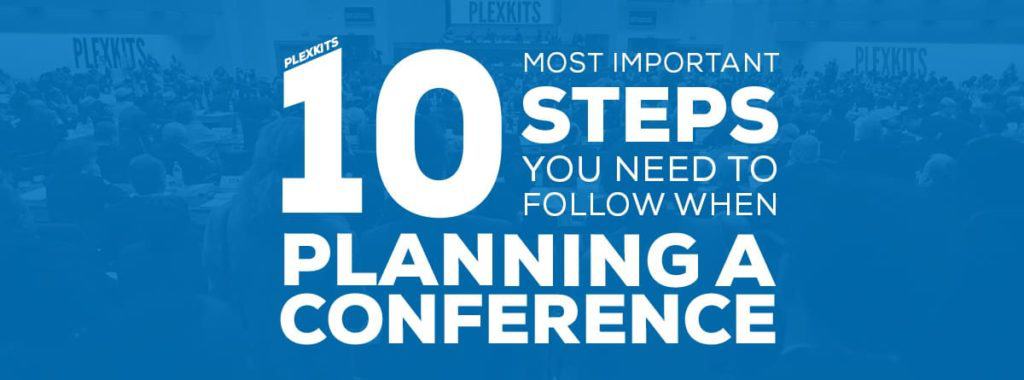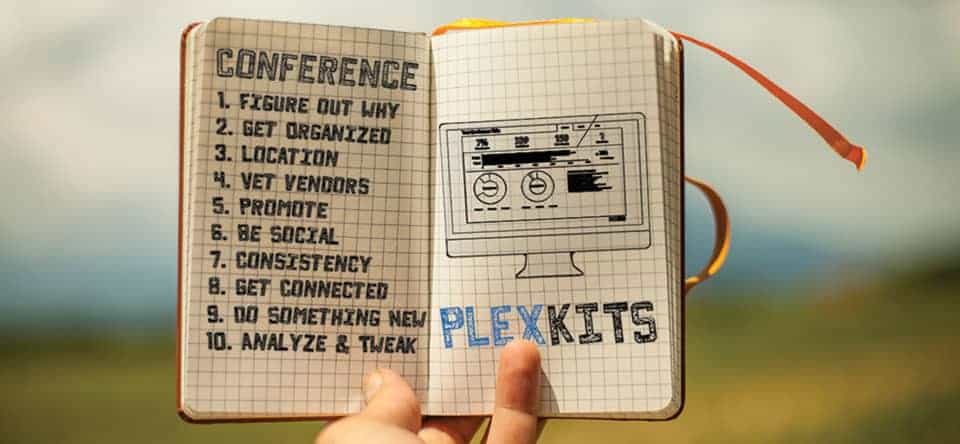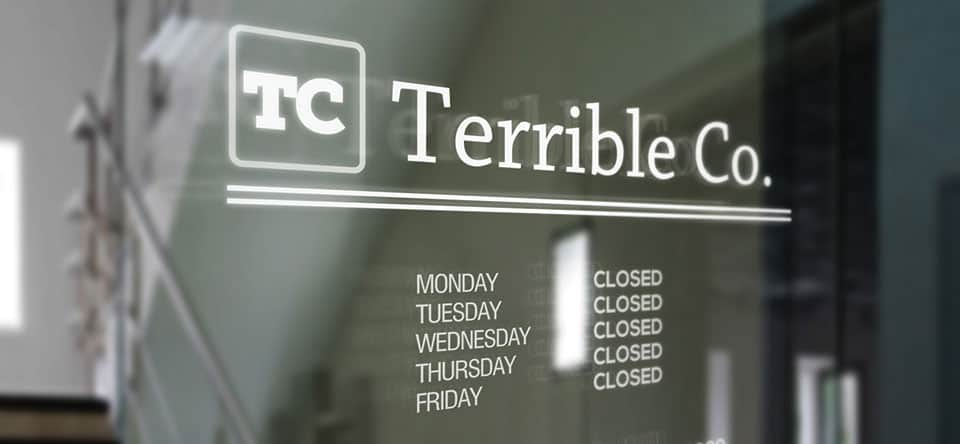
1. Make Sure You Know Why!
There are plenty of reasons that you might want to start planning a conference. Be it educational, business oriented, industry specific or many others, you must know what you ultimately want to achieve with your conference. Clearly defining your goals for the conference is key. Identify a few things: What are your attendees going to get out of the conference? Who is your target audience and ideal attendee? Why would someone want to attend?
Before you even begin conference planning, be sure to research whether there are already any other conferences that take care of your goals or fill that need for your potential customers.

2. Get Organized
“Before anything else, preparation is the key to success.
– Alexander Graham Bell
When you plan a conference, you are basically planning 20 little events that have to flow seamlessly into one another. From food & beverage to general sessions and breakouts, every little detail is essential! You will need to think of every aspect, from every point of view. Every decision you make going forward should tie back to the goals you defined in Step 1. Organization is the blood and sweat of planning a conference, but results in an event that guests enjoy and find memorable. The best conference planners slowly build a toolbox of resources to stay organized, and let me tell you, the classic binder isn’t anywhere near the top of the list anymore. We all are familiar with the thick binder full of nitty-gritty details, multiple revisions of confirmation, and more. There are infinite tools online to replace this, including our (*Shameless Plug*) Ultimate Conference Checklist. We don’t want to toot our own horn, but we think it’s pretty swell.

3. Location, Location, Location
The saying doesn’t apply only in the real estate world. Choosing a location is probably the second most important decision to make once you start planning a conference. You want the venue and city to match the goals of the conference. For example, consider a tech based conference – there are some clear epicenters for tech based industry: Silicon Valley, Downtown Las Vegas, San Francisco – you get the picture. Sure there are times when people love traveling to a tropical island for a paleontologist convention, but why not plan a conference where the local industry can enhance the experience?
Once you narrowed it down to a general area that meets all of your needs and satisfies your conference goals, you need to select a venue that can accommodate the scale of conference you are holding. If most of the attendees aren’t from the area, make sure that there are enough hotel rooms available at the time of your event. Remember, even a completely unrelated event on the same date can quickly end up turning into a logistical nightmare as you fight over resources.

4. Vet Your Vendors
Nothing can give you more peace of mind while planning a conference than having reliable vendors. There are a few ways to source your vendors. Word of mouth is my #1 option, because it gives me the opportunity to ask my colleagues and friends about their experiences working with others. Another option is to look at industry associations: Meeting Professionals International, International Special Events Society, Global Business Travel Association, these organizations represent a commitment to growing within the industry and being leaders in innovation and change. Membership lists are available from these organizations and they can be a great starting point for your conference needs!
The venue you select will sometimes provide you with a list of their approved or recommended vendors. If you select a vendor from the list, keep in mind that there is a good possibility that the venue is being compensated for a referral, which could mean they aren’t truthfully your best option. Also, be on the watch for hidden or extra fees from these approved vendors. I’ve been burned in the past with hidden costs, especially when using on-site services or vendors that are portrayed as “the only option”.

5. Promote Now or Forever Hold Your Peace
There are no secrets to success. It is the result of preparation, hard work, and learning from failure.
The best marketing strategies for conferences and events are those planned for the long game. Starting from Day 1 of your conference planning process, you can be engaging potential guests, presenters and sponsors through all sorts of mediums. If you don’t have a dedicated marketing person on your team, start looking into what it takes to craft a Marketing Communication Plan and how to incorporate a Social Media Plan as well (see the next step). If you don’t know where to start, there are some great resources available for this.
Being sure to relay all relevant details and information to your guests in both a creative and engaging way to help make sure that your attendees are included and know what to expect. This will make sure everyone (including yourself) gets the most benefit from the conference. Create a communication calendar for emails, social media posts and other promotions. Decide on what piece of information you want to share with your attendees and when. Make sure your promotions and time frame are inline with the conference goals.

6. Be Social & Listen
We’ve already talked about creating a marketing schedule and launching a communication plan, but in all that marketing talk, social media absolutely should get parsed out as its own responsibility. One of the best investments you can make is to ask someone with social media savvy to join your team to promote the conference before hand, and live-update audience members that couldn’t be there during the event. Your guests are only the first tier of your audience. Those connected to your guests and the networks that they are connected to also need some love. Share nuggets of insight about what is happening at your conference, what cool and unique experiences your guests are attending, and find a way to convert those 2nd and 3rd tier attendees to bodies in the seats. Obviously your key tools are Facebook, Twitter, YouTube, LinkedIn, etc… so brainstorm a few ways to reach your target market on those.
Social Media isn’t just about blasting your messages out there, to really be successful you need to listen and interact also. Monitor the web for mentions of your event and strike up conversations with potential attendees or join conversations that are already taking place.
Use a hashtag for your event to help people find related content and make sure you use it on all your communications. Encourage attendees to you it to whether they are talking about your conference on Twitter or posting a photo from the event on Instagram.

7. Consistency is Key
Your conference needs a consistent image and branding to convey your message and successfully meet the goals you set at the beginning of the planning process. Especially if you have a large site or you are planning a conference with multiple locations and venues, a clear theme that is easily identifiable as your event is absolutely essential. You walk into a new country and you see signature golden arches, you know that a double cheeseburger is on the other end. If your guests see the same logo/branding on their nametags, registration desk, directional signage across various rooms, websites, social media and more, they will spend less time figuring out if it’s the same conference and more time focusing on the takeaways you’re hoping to impart.

8. Get Connected
They say that “I agree to these terms and conditions” is the lie most often told. That comes in a close second to “Our in-house WiFi will be able to support your group”. Let’s take a quick second to talk about the not-so-glamorous world of wireless Internet and a constant connection to the world outside of the conference. While it is true that wireless internet is an investment in something that your guests won’t be able to see, taste, hear, smell or feel upon entering a room, give your guests 5 minutes with your conference centers in house WiFi and you will know immediately that something is very, very wrong. Wireless internet is absolutely essential in our connected age. We look at our phone 150 times a day, and if those 150 times a day are giving your guests a “No Signal” message, you can bet that they will not be able to think of any of the great content your presenters are sharing. Do not be that conference. Provide your guests with a WiFi connection and don’t charge extra for it. If it is really something that is going to set you back, build it into the cost of a ticket. It will be expected.

9. Do Something New!
After the event, when an attendee is approached by his colleagues and asked how the conference went, the last thing you want them to say is the usual “same-old, same-old”. Well, actually the last thing you want them to say is “it was horrible”, but you get where I’m headed.
Every day, we are surrounded by innovation and creativity that can be used to improve the way that we manage conferences. For example – with the great progress we’ve seen in video conferencing apps in the past few years, why not offer a live stream of your conference to those who can’t attend. You could have a discounted fee for access to certain parts of the conference online. If you live broadcast the event you can even accept questions and comments from videos online. This is a great way to boost the use of that conference hashtag you created. If you have recorded any sessions already, you could offer them to your attendees as a summary or even repurpose them as YouTube videos on your company channel.
It’s important to remember that innovation and upgrades cost money. You may have to reallocate some of your budget or increase ticket prices for the conference to cover the additional costs, but raising the bar for what your customers think a meeting or conference can be is worth the investment.

10. Analyze, Tweak, Repeat
Finally, after planning a conference, don’t forget to take the time to reflect on what went well during your event, what challenges came up, the opportunities for improvement and the threats for the next conference. Sit down with all of the key stakeholders for your event including your sponsors, presenters, your venue and suppliers and anyone else that was essential in helping you make your event a success. Keep the conversation open and casual to avoid placing any blame on pressure points, but also go into the meeting having a desired outcome. For paid conferences, a common wrap-up discussion is brainstorming ways to increase profits, which ultimately means making improvements and adjustment on how it went the first time around. Take this as a very important step in the ongoing success of your event and you will see that each time you start planning a conference, it gets a little easier.
Now that you’ve got a good handle on the basics, don’t forget to check out our Conference Planning Checklist Excel Template to help you organize and track your progress. Best of luck with your Event!
Do you know of any other important steps for conference planning? Share them with the world in the comments below!
